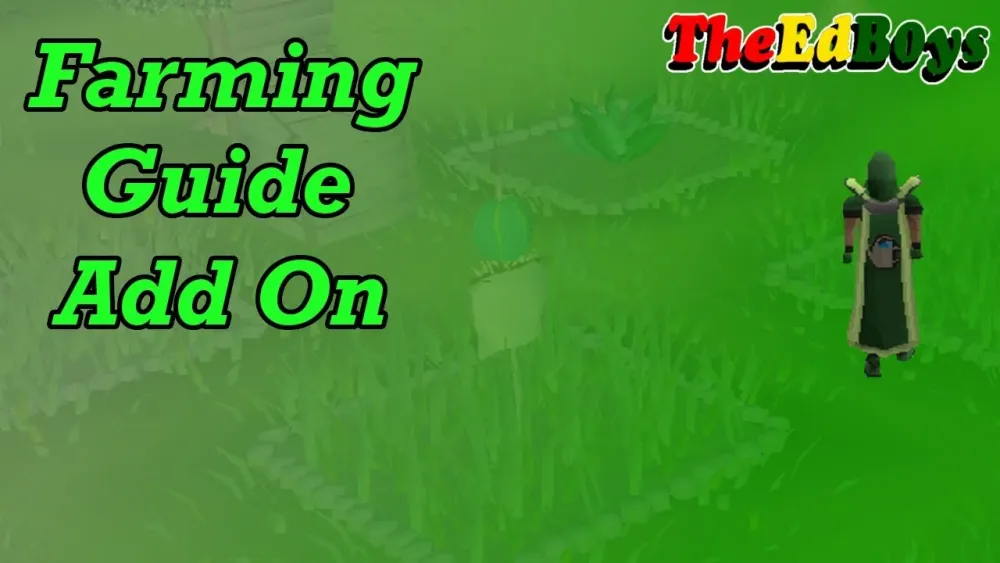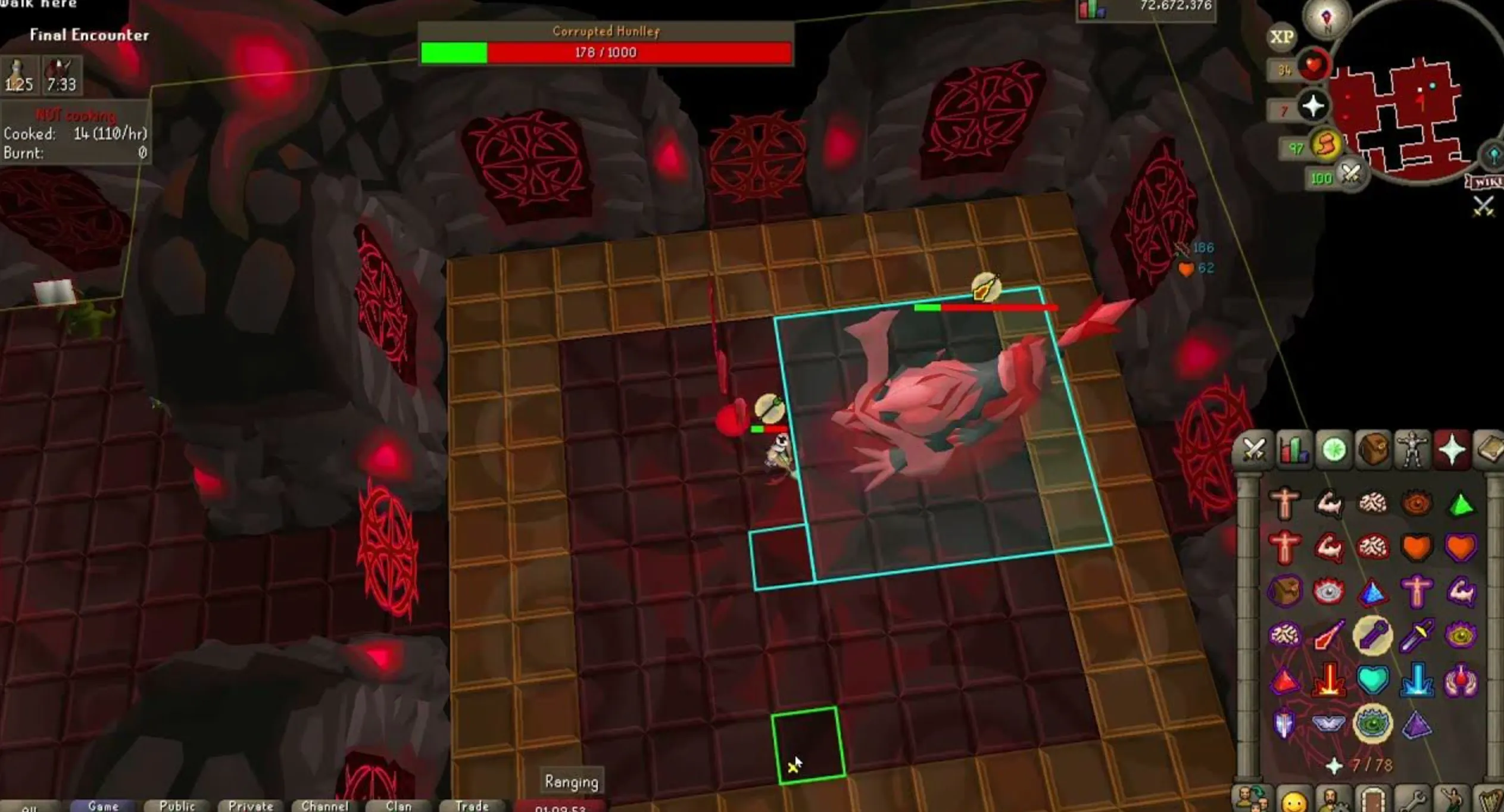Your cart is empty
OSRS Pay Farmers for Herb Watching A Comprehensive Guide

In Old School RuneScape (OSRS), farming is a skill that allows players to grow crops, including valuable herbs used for Herblore and profit. One of the key mechanics in farming is protecting crops from disease, and while you can pay farmers to watch over many types of crops, herbs present a unique challenge. Unlike trees or allotments, herbs cannot be protected by paying farmers, making herb runs a riskier but rewarding endeavor. This guide explores the nuances of herb farming, why paying farmers isn’t an option for herbs, and how to maximize your herb runs for profit and experience. Whether you’re a new player or a seasoned farmer, this blog post will help you navigate the world of OSRS herb farming.
Farming in OSRS is a semi-passive skill where players plant seeds, wait for crops to grow, and harvest them for resources or experience. Herbs, in particular, are popular due to their high value in potion-making and consistent demand on the Grand Exchange. However, the inability to pay farmers to protect herbs makes them susceptible to disease, which can wipe out your crops and profits.
How Crop Protection Works in OSRS
Farmers in OSRS act as guardians for certain crops, ensuring they grow to maturity without disease. For example, you can pay a farmer to watch over tree patches (e.g., 200 coins to remove a tree or specific items like baskets of apples for fruit trees). The payment varies by crop type, and noted items are accepted for convenience. Unfortunately, herbs and flowers are excluded from this protection mechanic, meaning players must rely on other methods to reduce disease risk.
Why Herbs Can’t Be Protected by Farmers
Jagex designed herb and flower patches to be riskier to balance their high profitability. Herbs like Ranarr and Snapdragon can yield significant profits (up to 360k per run), but the lack of farmer protection introduces uncertainty. This forces players to use strategies like compost, diary rewards, and specific items to mitigate losses. The trade-off is that successful herb runs can fund expensive tree runs or other in-game goals.
Maximizing Herb Run Efficiency

Since you can’t pay farmers to watch herbs, optimizing your herb runs is crucial. This involves using the right tools, teleports, and patches to minimize time spent and maximize yields. A well-planned herb run takes about 5–6 minutes and can be repeated every 80 minutes, making it one of the most efficient money-makers in OSRS.
Essential Items for Herb Runs
To make your herb runs as efficient as possible, you’ll need specific items to boost yield and reduce disease risk. Here’s a list of must-haves:
- Magic Secateurs: Obtained from the “Fairytale I – Growing Pains” quest, these increase herb yield by 10%.
- Ultracompost: Reduces disease chance to 8.3% per patch and guarantees at least 6 herbs per seed when paired with Magic Secateurs.
- Herb Sack: Purchased for 250 Tithe Farm points, it stores herbs directly, saving inventory space.
- Seed Box: Also from Tithe Farm (250 points), it holds up to six seed types, streamlining planting.
- Teleports: Skills Necklace, Explorer’s Ring, Ardougne Cloak, and Quetzal Whistle for quick access to patches.
Choosing the Right Herb Seeds
Not all herbs are equally profitable. The OSRS Herb Farming Calculator can help determine the best seeds based on your Farming level and market prices. As of February 2025, Ranarr weeds are the most profitable, yielding up to 2.63M GP per hour when farmed across all patches. Other viable options include:
| Herb | Seed Cost (GP) | Average Yield per Patch | Profit per Hour (GP) |
|---|---|---|---|
| Ranarr Weed | 24,700 | 8.8 | 2.63M |
| Toadflax | 1,200 | 8.8 | 2.53M |
| Snapdragon | 36,000 | 8.8 | 2.51M |
Note: Prices fluctuate, so check the Grand Exchange regularly.
Disease-Free Herb Patches
While farmers can’t protect herbs, certain patches are immune to disease, significantly boosting your success rate. Unlocking these patches should be a priority for serious herb farmers.
Hosidius Herb Patch
After gaining 50% Hosidius favor, the herb patch in Hosidius becomes disease-free, making it a reliable choice for consistent yields. This is achievable early in the game and requires minimal effort.
Troll Stronghold and Weiss Patches
Completing “My Arm’s Big Adventure” unlocks the Troll Stronghold herb patch, and “Making Friends with My Arm” grants access to the Weiss patch. Both are perpetually disease-free, ensuring your herbs always survive. These quests require moderate stats but are worth the effort for Ironmen and profit-focused players.
Other Notable Patches
The Farming Guild (65+ Farming) and Varlamore (post-“Children of the Sun” quest) patches are not disease-free but are accessible with fast teleports. The Harmony Island patch, unlocked after the Elite Morytania Diary, is another disease-free option but requires significant questing and diary completion.
Strategies to Reduce Herb Disease Risk
Without farmer protection, you’ll need to rely on in-game mechanics and items to keep your herbs alive. Here are proven strategies to minimize losses:
Use Ultracompost and Anima Seeds
Ultracompost is non-negotiable for herb runs, reducing the chance of disease from 50.6% to 8.3% across three growth stages. Planting Iasor seeds in the Farming Guild’s Anima patch further cuts disease risk by 80%, making it nearly negligible. Iasor seeds require 76 Farming, so prioritize this unlock at higher levels.
Leverage Diary Rewards
Completing the Kandarin Diaries (Medium, Hard, or Elite) boosts herb yield by 5–15% at the Catherby patch. The Easy Kourend & Kebos Diary protects Hosidius patches, and the Elite Morytania Diary unlocks the Harmony Island patch. These rewards stack with other boosts for maximum efficiency.
Monitor Patches with Geomancy
The Lunar spell “Geomancy” lets you check the status of all farming patches every 15 minutes, allowing you to cast “Resurrect Crops” if a patch becomes diseased. This requires 78 Magic and the Necromancy spellbook, but it’s a lifesaver for high-value herbs like Torstol.
Profit and XP from Herb Runs
Herb runs are not only profitable but also provide decent Farming experience, making them ideal for players aiming for level 99. Here’s how to balance profit and XP while managing the lack of farmer protection.
Profit Potential
A single herb run can yield 360k–2.63M GP, depending on the herb and number of patches used. With 10 patches (including Varlamore and Harmony Island), Ranarr runs can generate over 3M GP per day if done every 80 minutes. The key is to use disease-free patches and Ultracompost to ensure consistent yields.
Experience Gains
Herb runs offer moderate XP (around 1,000–2,000 per run), but they’re best combined with tree and fruit tree runs for faster leveling. For example, planting Torstol seeds at level 75 Farming yields about 199.5 XP per seed when harvested. To reach 99, supplement herb runs with Tithe Farm or tree runs, which provide up to 100k XP per hour.
Tips for Ironmen
Ironmen rely on herb runs for Herblore ingredients, as they can’t buy herbs on the Grand Exchange. Pickpocketing Master Farmers (level 38 Thieving) is a great way to gather seeds, yielding up to 60 high-level seeds per hour at max efficiency. Focus on disease-free patches and save herbs for high-level potions like Prayer or Super Combat.
Herb farming in OSRS is a high-risk, high-reward activity due to the inability to pay farmers for protection. By using Ultracompost, Magic Secateurs, disease-free patches, and diary rewards, you can minimize losses and maximize profits. Whether you’re funding a Magic skillcape or training Herblore as an Ironman, herb runs are a cornerstone of efficient Farming. Start with accessible patches like Hosidius, work toward unlocking Troll Stronghold and Weiss, and watch your bank grow with every harvest. Happy farming!

